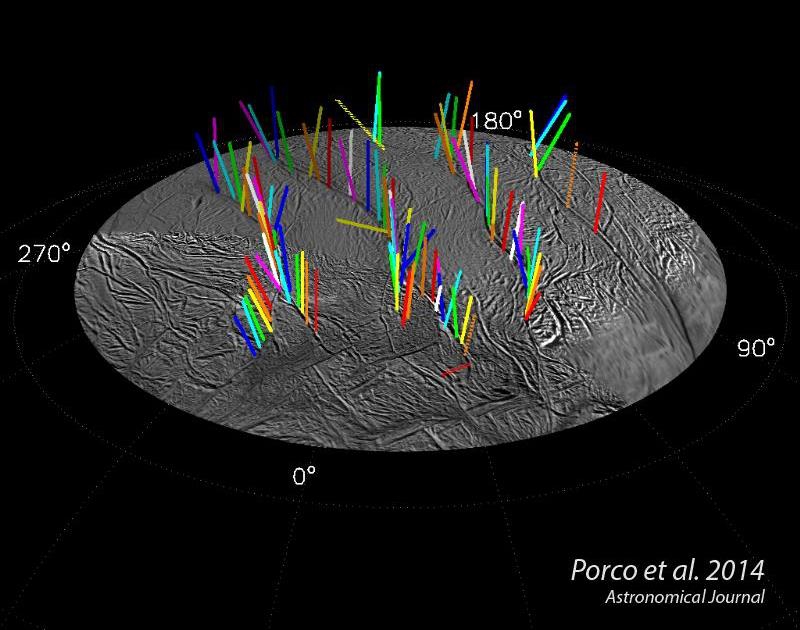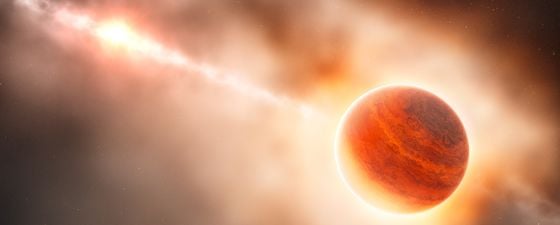I don’t think the human race will survive the next thousand years, unless we spread into space. There are too many accidents that can befall life on a single planet. But I’m an optimist. We will reach out to the stars. Stephen Hawking, Astrophysicist
Hydrates on Planets and Moons?
At the moment, the existence of hydrates on planets, moons and other solar bodies is based on our knowledge of their pressure and temperature conditions and gases present around them. The conditions for hydrate stability exist in both the atmospheres and the subsurface of a number of planets and moons in our solar system. In particular, gas hydrates are probably more abundant than rocky materials or all polymorphs of pure ice in the gas giant planets of Jupiter, Saturn, Uranus, and Neptune. It is therefore possible that the amount of gas in the form of hydrates in our solar system is surpassed in total quantity only by hydrogen and helium.
The hydrate formation mechanisms and the resulting hydrate compositions in our solar system are highly varied. Possible formation mechanisms which have been proposed (Kargel, 2001) include:
- Direct condensation of amorphous CO-CO2-N2-rich hydrates from the Solar Nebula by the reaction of hydrate-forming gases with water ice. This process would be responsible for hydrate formation in comets and the Kuiper asteroid belt.
- Heating of condensation products of the Solar Nebula to form N2-CO-rich and CH4-rich clathrate hydrates in comets, on Pluto, Charon, Triton, and Plutinos.
- Direct condensation of N2-CO-rich and CH4-rich clathrates from circumplanetary nebulae of the outer planets, such as Callisto and the moons of Saturn, Uranus, and Neptune.
- Formation of SO2-, CO2-, and N2-rich clathrates in the primordial hydrospheres of Earth, Mars, Europa, Ganymede, and Callisto.
- Formation of SO2– and CO2-rich clathrates or CO2-dominated clathrates in planets with more evolved hydrospheres (Martian permafrost and Europa’s icy cryosphere).
- Formation from biogenic sources of CH4 clathrate, forming methane-rich hydrate on the Earth’s permafrost and seafloor, and possibly on Mars and Europa.
- Formation by thermogenic origin of CH4-C2H6-C3H8-rich clathrates (hydrates related to petroleum and gas deposits on Earth).
In addition, Mars and Earth have a variety of other minor clathrate-forming mechanisms, including occlusion of air in polar ices (forming N2-O2-rich clathrates in the case of Earth and CO2-rich clathrates in the case of Mars).
Thus, clathrates are believed to occur in large quantities on some outer planets, moons and trans-Neptunian objects, binding gas at fairly high temperatures. A trans-Neptunian object is any minor planet in the solar system that orbits the Sun at a greater average distance than Neptune.
Enceladus: Trans-Neptunian Object with Geysers
 A six and a half year survey of Enceladus’ south polar terrain (SPT) by the Cassini imaging experiment has located ~100 jets or geysers erupting from four prominent fractures crossing the region. The heat accompanying the geysers is believed to be transported, in the form of latent heat, from a sub-ice-shell sea of liquid water, with vapor condensing on the nearsurface walls of the fractures. (Porco, DiNino and Nimmo, 2014) (NASA/JPL-Caltech/Space Science Institute)In Greek mythology, Enceladus was one of the Giants, the offspring of Gaia (Earth) and Uranus (Sky). In astronomy, Enceladus is the sixth-largest moon of Saturn, with a radius of 250 km and surface temperature of about -180°C. It was discovered in 1789 by William Herschel.
A six and a half year survey of Enceladus’ south polar terrain (SPT) by the Cassini imaging experiment has located ~100 jets or geysers erupting from four prominent fractures crossing the region. The heat accompanying the geysers is believed to be transported, in the form of latent heat, from a sub-ice-shell sea of liquid water, with vapor condensing on the nearsurface walls of the fractures. (Porco, DiNino and Nimmo, 2014) (NASA/JPL-Caltech/Space Science Institute)In Greek mythology, Enceladus was one of the Giants, the offspring of Gaia (Earth) and Uranus (Sky). In astronomy, Enceladus is the sixth-largest moon of Saturn, with a radius of 250 km and surface temperature of about -180°C. It was discovered in 1789 by William Herschel.
In 2005, NASA’s Cassini spacecraft started multiple close flybys of Enceladus, revealing its surface and environment in great detail. Cassini immediately spotted geysers erupting from four ‘tiger stripe’ fractures near Enceladus’ south pole, but their origin still remains the subject of debate. Over a period of nearly seven years, scientists have now mapped out 101 geysers shooting jets of water vapor, other volatiles, and solid material including sodium chloride crystals and ice particles into space, approximately 200 kg per second in total.
In April 2014, a scientific publication revealed that Enceladus harbors a big 10 km deep ocean of liquid water beneath its icy crust. The heat required to keep this water in a liquid state is generated within Enceladus, with much of that energy probably coming from tidal interactions between Enceladus and another of Saturn’s moons, Dione. The water is in direct contact with a rocky seafloor, theoretically making possible all kinds of complex chemical reactions – such as, perhaps, the kind that led to the rise of life on Earth.
Some scientists think the geysers reach all the way down to the ocean of liquid water that sloshes beneath Enceladus’ icy shell, and that they blast into space when the fractures open up.
It is interesting to note that another proposal is that the geyser activity originates from clathrate hydrates, where carbon dioxide, methane, and nitrogen are released when exposed to the vacuum of space by the tiger stripe fractures found in that area.
Hydrate Formation in Protoplanetary Nebulae
Stars form from interstellar gas, mainly hydrogen, and dust that is concentrated in clouds, locally raising the gravitational force. The cloud shrinks and starts to spin. This rotation causes the cloud to flatten out – much like forming a flat pizza out of dough – and take the form of a disk where a warm protostar forms. The protostar radiates heat and at the same time ejects matter outwards from its poles. Eventually, the protostar becomes massive enough to start fusion in its core. The star starts its active nuclear life while gas and dust create planetoids around it.
The rotating circumstellar disk of dense gas surrounding a young newly formed star is called a protoplanetary disk or nebula. Conditions for hydrates in the protoplanetary nebula are considered to be fulfilled, the key being to document the presence of enough microscopic ice particles exposed to the gaseous environment.
The Infrared Space Observatory (ISO), launched in 1995, was a space telescope for infrared light designed and operated by the European Space Agency. The ISO was designed to study infrared light at wavelengths of 2.5 to 240 μm and, among other things, it searched for and found several protoplanetary disks. In addition, broad emission bands of water ice at 43 and 60 μm were found in the disk of the isolated Herbig Ae/Be star HD 100546 in Musca. The one at 43 μm is much weaker than the one at 60 μm, which means the water ice is located in the outer parts of the disk at temperatures below 50°K. There is also another broad ice feature between 87 and 90 μm, which is very similar to the one in the Butterfly nebula in Scorpius.
Crystalline ices have also been detected in the protoplanetary disks of ε-Eridani and the isolated Fe star HD 142527 in Lupus. Ninety per cent of the ice in the latter was found crystalline at temperatures of around 50°K.
 An artist’s impression showing the formation of a gas giant planet in the ring of dust around the young star HD 100546. This protoplanet is surrounded by a thick cloud of material so that, seen from this position, its star is almost invisible and red in color because of the scattering of light from the dust. (ESO/L. Calçada)
An artist’s impression showing the formation of a gas giant planet in the ring of dust around the young star HD 100546. This protoplanet is surrounded by a thick cloud of material so that, seen from this position, its star is almost invisible and red in color because of the scattering of light from the dust. (ESO/L. Calçada)






